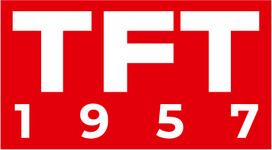Following the successful pilot launch of its ENCO captioning solution, EES deployed the enCaption automated captioning system to meet the department’s goal of increasing productivity, reducing time to market for its products and services, while continuing to provide accurate captioning services.
The VHA Employee Education System (EES) provides a wide range of training materials, wellness programs, and interagency communications for VA personnel and veterans nationwide.
Based on its satisfaction with the initial enCaption pilot project and the acquisition of its first enCaption device, EES is currently in the process of adding two more enCaption devices for real-time subtitling of two channels of satellite programs operating 24 hours a day, 7 days a week.
The VA Knowledge Network (VAKN) Satellite Communications Center, located in St. Louis, Missouri, distributes two programming channels to 250 VA medical centers and community outpatient clinics across the country. The VA-1 channel is designed to educate and communicate with over 400,000 VA employees and contractors. His second 24/7 Veteran News Network (VNN) channel is also distributed to both internal and external audiences on platforms such as YouTube and Roku. VNN offers programs about veterans’ health issues, benefits, nutrition, and other aspects of veteran care. All VAKN content is closed captioned, both to comply with regulations and to ensure full accessibility for staff and veterans with disabilities or disabilities.
Until recently, EES has exclusively used live captioning service providers with human transcribers. The provider connected to the property’s title encoders and transcribed the content in real time, which was then archived for later playback on the channels. In an effort to modernize its technology and improve performance, VA began researching an AI-based automated captioning solution to improve existing captioning services.
“In our previous workflow, we needed to schedule a set of subtitles, but the deadlines for our Master Control engineers were quite tight,” explained Hugh Graham, Telecommunications Specialist, VHA Employee Training System. “The engineer had to start playing the original content on one device and record the result with subtitles on the other. It was very time consuming and any technical failures became a significant bottleneck.”
After extensive research, EES tested the enCaption device at its St. Louis facility and found it to be suitable. The accuracy of enCaption’s speech-to-text conversion was particularly impressive.
The EES enCaption workflow mirrors its previous counterpart with human captioning. Content is played from the media server on the enCaption device. The resulting subtitled data and video are fed to the EEG 470 subtitle encoder and embedded. Closed captioned video can be routed to a recorder, uplink, or streaming media encoder for distribution. EES uses Haivision’s encoders for streaming delivery, and also uses Haivision’s cloud delivery service, Haivision Hub, to deliver VNNs to YouTube and Roku devices. “This signal flow makes it very easy,” Graham said. “We just embed the titles into the SDI signal once, and the embedded results are available on any of our platforms.”
Already enjoying the freedom from having to schedule human decryption, EES looks forward to further productivity gains with the purchase of two additional enCaption devices. The new enCaption systems will provide 24/7 live captioning on VA-1 and VNN satellite channels, YouTube and Roku. The standalone enCaption module will be used for custom captioning of real-time sources or file-based content.









